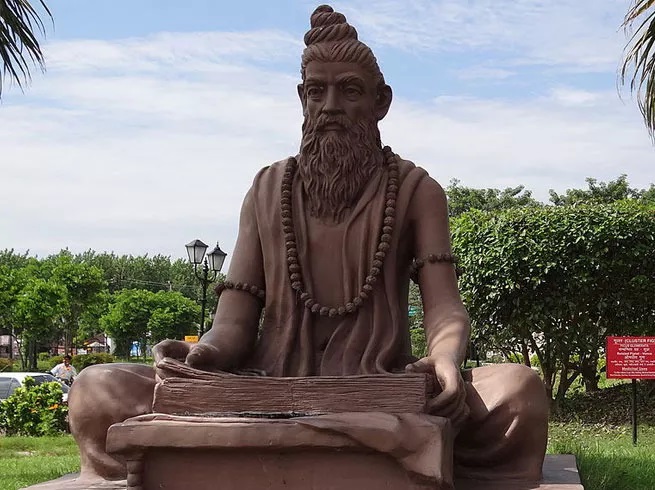More Coverage
Twitter Coverage
Satyaagrah
Written on
Satyaagrah
Written on
Satyaagrah
Written on
Satyaagrah
Written on
Satyaagrah
Written on
JOIN SATYAAGRAH SOCIAL MEDIA
Legend of Maharishi Charaka also known as The father of Ayurveda: Earliest school of medicine known to mankind is Ayurveda

One of the earliest school of medicine known to mankind is Ayurveda. It was consolidated by Charaka nearly 2500 years ago. Ayurveda is a Sanskrit word in which ‘Ayur’ means life and ‘Veda’ means science. Ayurveda is the science of life.
This wellness system that originated in India around 5000 years ago, focuses on mindful nutrition, stress reduction, and cultivation of a balanced lifestyle. It is the oldest form of medical practice known to man. This ancient Indian medical science is celebrated by people across the world for its efficiency in curing ailments without any side effects. But not many people know about Acharya Charak aka Maharishi Charaka, the father of Ayurveda.
His principles, diagnoses, and cures retain their potency and truth even after a couple of millennium. When the science of anatomy was confused with different theories in Europe, Acharya Charak revealed the facts on human anatomy, blood circulation, embryology, pharmacology, and diseases like diabetes, heart disease, tuberculosis, etc.
In his book “Charak Samhita,” he has described the medicinal qualities and functions of 100,000 herbal plants. He has emphasized the influence of our diet and physical activities over our mind, which is even practiced by our today’s generation. He has proved the correlation between spirituality and physical health contributed greatly to diagnostic and curative sciences.
He has also prescribed the ethical charter for medical practitioners two centuries prior to the Oath. Through his genius and intuition, Acharya Charak forever remains etched in the annals of history as one of the greatest and noblest of rishi-scientists.
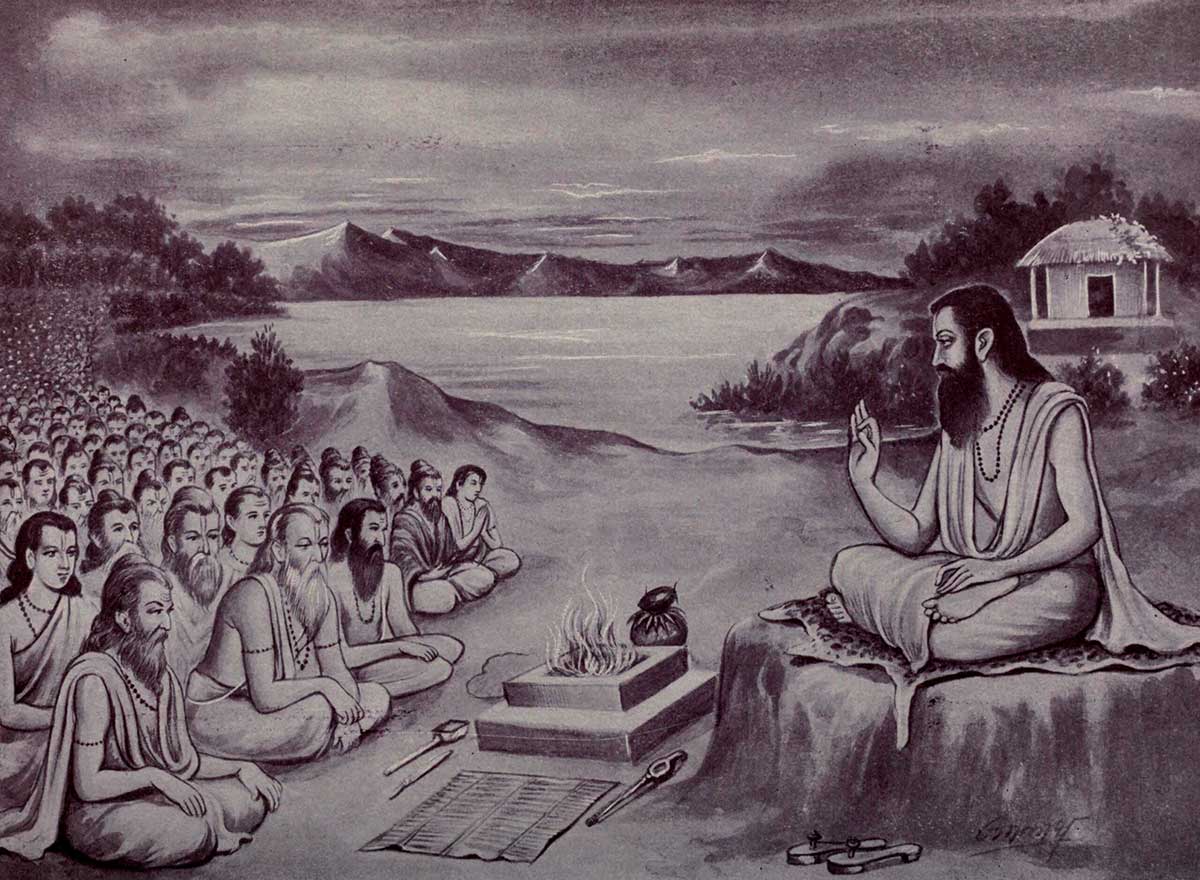 |
The father of Ayurveda
Born in 300 BC, Acharya Charaka is crowned as the father of Ayurveda due to his contribution to Ayurveda. He became a principal contributor to the science of Ayurveda who developed the art of Ayurvedic culture. His work ‘Charaka Samhita’ is considered as the Encyclopedia of Ayurveda. While the other parts of the world were struggling with the science of anatomy, Acharya Charaka was already an expert in human anatomy, embryology, pharmacology, blood circulation and diseases like diabetes, tuberculosis, heart disease, etc.
According to Charaka’s translations, health and disease are not predetermined. Our lifestyle and environment play a major role in our health and wellness. His works preached that one can live a healthy and peaceful life if he lives in harmony with nature. The Ayurvedic system provides preventive measures and solutions to all kinds of illnesses and ailments. It tells us a way to restructure our life to align with the course of nature. This guarantees complete wellness.
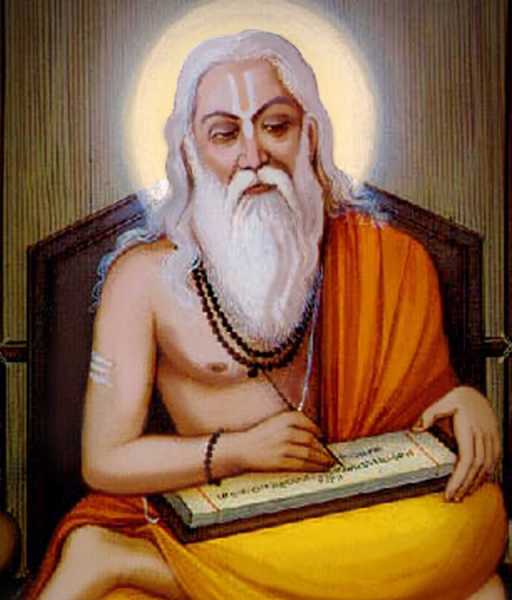 |
How did Maharishi Charaka receive the gift of Ayurveda
The legend goes that the Lord Brahma created Ayurveda. He then transmitted this knowledge to his son, Daksha Prajapati. Daksha passed it down to the twin Vedic gods Ashwini Kumaras who then became the physicians of the gods and the Devas of Ayurveda. The twin gods presented Ayurveda to Indra, the king of gods. Indra had three physicians as his disciples, namely Acharya Bharadwaj, Acharya Kashyapa, and Aacharya Divodas Dhanvantari.
From Acharya Bharadwaj’s teaching, his student Agnivesha developed the fundamental Ayurvedic text of internal medicine. Aginivesha wrote all his study in the form of an ancient script, known as ‘Agnivesa Samhita’. Agnivesha’s disciple, Acharya Charak then revised this body of work and compiled it into an easily understandable Ayurvedic guide called ‘Charaka Samhita’ and passed down the knowledge of Ayurveda from gods to sages.
After thoroughly analyzing historical evidences and cross references, timeline of Acharya Charaka stands between 7th and 2nd century B.C. The actual details pertaining to Acharya Charaka, name of his parents, place of birth etc. are not available. He is believed to be a native of Kashmir. References of Chanderbhaga river (Chinab river) in Charaka Samhita also points to the geographical connection of Acarya Charaka.
Acharya Charaka is rendered the highest reverence and tributes because he thoroughly refined the text ‘Agnivesha Tantra’ written by Sage Agnivesha. His hard work and dedication resulted in the shape of world-famous compendium of ‘Charaka Samhita’. His literary work and annotations were so spectacular that very soon his book gained popularity.
The original text ‘Agnivesha Tantra’ now began to be known as ‘Charaka Samhita’ The popularity of Charaka Samhita continued to swell and attracted many scholars. Charaka Samhita was equally popular in medical as well as in non-medical circle. Original text of Charaka Samhita is written in Sanskrit. It has been translated in many international and national languages due to its popularity. Even in modern times it attracted notice of western scholars. A Club namely ‘Charaka Club’ was established in New York in 1898 by a group of four doctors to perpetuate the memory of Acharya Charaka.
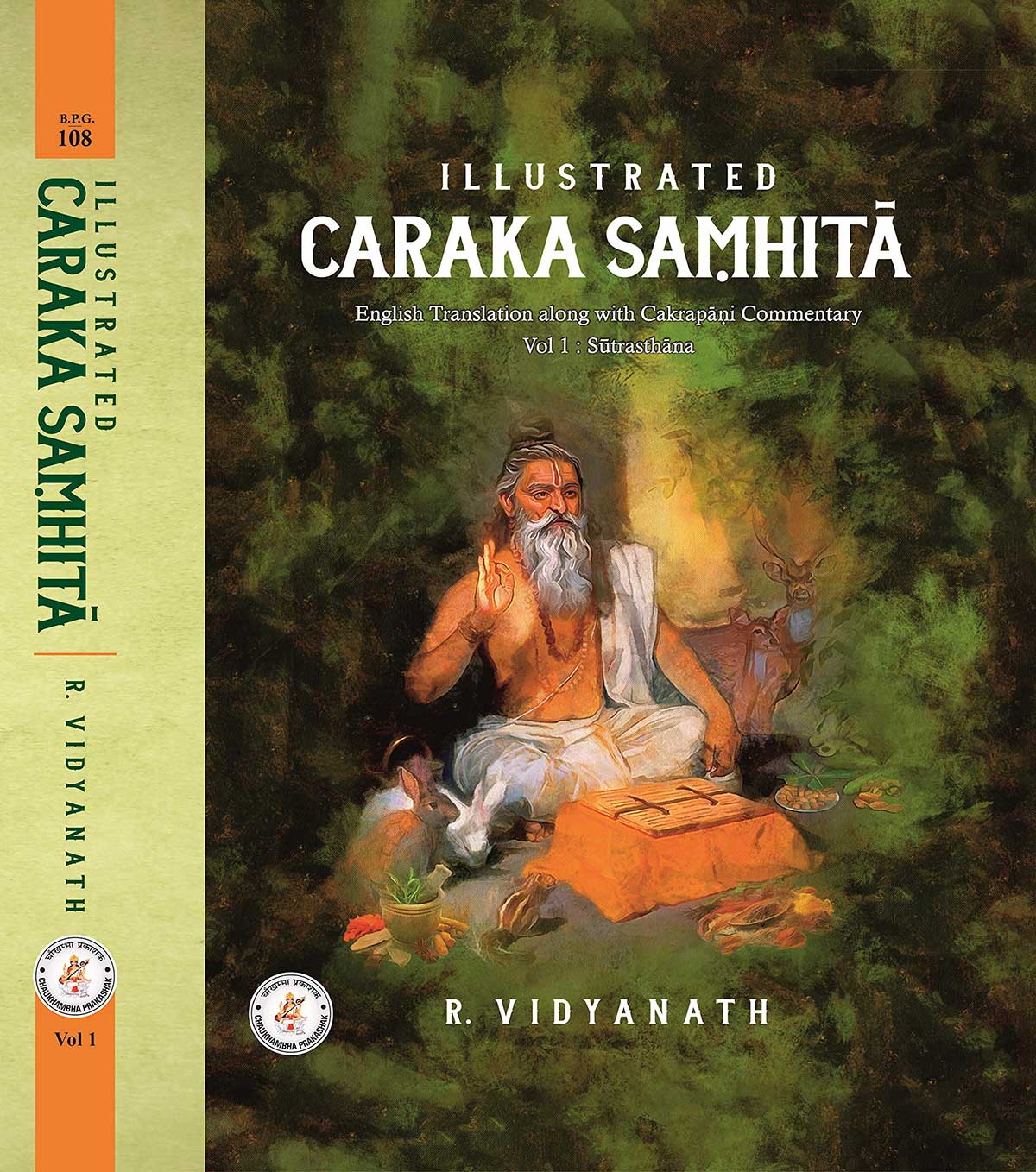 |
Charaka Samhita
The Charak Samhita / Caraka Samhita(CS, Devanagari :चरक संहिता) is the most referred text of Ayurvedic students, teachers, physicians, scholars, and researchers. The genesis of this text lies in the Agnivesha Tantra, a seminal work of antiquity written by Acharya Agnivesh approximately 3000 years ago following the Guru-Shishya tradition of knowledge transfer and mentorship. Acharya Charak redacted this information about 2600 years ago, giving the treatise its present name.
According to Charaka Samhita, anything and everything in the universe is composed of vata, pitta, and kapha. They are considered as the force of nature in Ayurveda that helps us understand the universe better. In essence, they are derived from the five basic elements: Space, air, water, fire, and earth. It contains over 8,400 metrical verses and is divided into eight divisions (ashtanga sthanas) viz., sutra, nidana, vimana, sharia, indriya, chikitsa, kalpa and siddha sthanas. Each division is further divided into numerous chapters, it describes existing knowledge about medical aspects and the logic and philosophy behind the medical systems.
In the 4th century of the Common Era (CE), Dridhabala added 41 chapters: 17 chapters of Chikitsa Sthana, a complete Kalpa Sthana of 12 chapters, and the Siddhi Sthana of 12 chapters as well, to produce the present preferred version of the text. In the subsequent years, the treatise has not incorporated any changes in its format, though it was enriched from time to time with new interpretations and infusions of new knowledge through redactions and commentaries.
As a text, the Charak Samhita epitomizes one of the finest examples of teacher-student interactions ever recorded and written, either in ancient or modern times. The Charak Samhita is considered the best compendium among all available Ayurvedic classic texts as a resource for the medical practitioner. It is not merely a text for the management of diseases - rather it is of the only texts available worldwide on restorative science, emphasizing the promotion of health and prevention of disease as the actual solution for controlling diseases, which is especially relevant in modern times. Further, it also seriously dwells upon the concept of longevity and healthy aging, as described in its chapters on Swasthavritta Chatushka and four parts of Rasayanadhyaya. Charak integrates the science of Yoga with body-mind connections described in Sankhya philosophy and the world view of ecosystems.
The treatise was a living document for 1500 years before it went through a “dark age” of relative stagnation. The darkest period for the Samhita in particular, and Ayurveda in general, was the advent of western allopathy through British imperial rule of India. This somewhat long disruption in the process of inquiry and revision of Ayurvedic texts explains why any modern-day reviewer or commentator does not find any evidence of any interaction between Ayurveda and modern medical science.
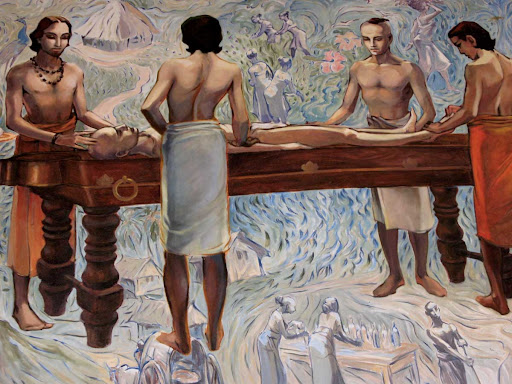 |
Why does it need a revision now
Modern medicine or allopathic medicine has, over the past few decades, made significant strides in the area of disease management. However, in spite of the significant breakthroughs that it has witnessed, modern medicine continues to be primarily an “offense strategy” for managing ailments. It does not stress upon disease prevention because the etiology of chronic diseases is unknown. In contrast to this, Ayurveda (or Knowledge of Life) system primarily utilizes the “defense strategy” in health management- as detailed and described in the treatise. Ayurveda prescribes a holistic approach towards managing health, and diseases and is very pertinent in today’s world. However, the treatise in its existing form needs to be updated in today’s context, and for a wider audience. Realizing this critical need, Dr. Gopal Basisht, MD in alliance with Ayurveda scholars in India conceptualized the Charak Samhita New Edition and Update initiative in 2013.
The Charak Samhita New Edition Project was initiated in 2013 with mainly two Objectives:
- To Create a Charak Samhita live edition with updates which can serve as reference manual on Ayurveda(Knowledge of life) that will help interactions between practitioners and researchers globally
- Promote Ayurveda as one of the best Preventive Healthcare Systems available.
Highlights of Charaka Samhita
It is difficult to enumerate all the contributions of Acharya Charaka in limited space as they are manifold. Some important contributions are described as under:
- Acharaya Charaka gave first hand explanation of the basic physiological and anatomical fundamentals and principles of human life viz. Tridosha (Vata-Pitta-Kapha), Pancha Mahabhuta (Akasha-Vayu-Agni-Jala-Prithvi), Agni, Sapta Dhatu (Rasa-Rakta-Mamsa-Meda-Asthi-Makjja-Shukra), Prakriti etc. Charaka was the first physician to explain the concepts of digestion, metabolism, immunity and reproduction.
- Causes, pathology and management of various diseases was described extensively by Acharya Charaka in Charaka Samhita. It remains a mystery for all in what type of laboratories and with what kind of equipment they were able to arrive on such precisely definite conclusions.
- Acharya Charaka propounded the threefold mechanism of body-mind-spirit and advocated that human life is based on the tripod of Sattva (mind), Atma (spirit)and Sharira (body). Hence he is the original contributor of the modern day Psychosomatic phenomena and mindfulness
- Acharya Charaka is to be credited for getting rid of the blind beliefs and superstitions of olden days regarding occurrence of diseases and their treatment. He promulgated the Rational treatment approach (Yuktivyapashya Chikitsa) in the management of diseases
- Acharya Charaka introduced the concept of Roga and Rogi Pariksha (Examination of disease and diseased). The fivefold diagnostic techniques (Nidana panchaka) described in Charaka Samhita are successfully practiced even today by Ayurveda practitioners
- The increasingly popular concept of Psycho-somatic constitution i.e. Prakriti as a patient specific treatment approach was firstly explained by Acharya Charaka
- The Medical science was classified into eight specialized branches by Acharya Charaka which shows his futuristic approach by suggesting the basic idea of super-specialty in Medicine
- Charaka Samhita gave highest importance to increase longevity of human life. The name of the very first chapter of Charaka Samhita is ‘Dirghamjivitiyam Adhyaya’ meaning ‘Quest of longevity’. Polular methods of Rasayana (Rejuvenation therapies) and Vyadhikamatva (Immuno-boosting) are gifted by Acharya Charaka to mankind
- The principle of ‘Nidana Parivarjana’ (avoiding causative factors of diseases) is mentioned in Charaka Chikitsa. The crux of this principle is preventive medicine. Even today, while dealing with Corona virus we depend more on prevention than cure
- He gave great importance to food, food habits, method of eating, qualities of good food and characteristics of bad food. Detailed seasonal dietary and behavioral regimen (Ritucharya) is illustrated in Charaka Samhita
- Properties and therapeutic actions of thousands of herbs and formulations are described in Charaka Samhita which are still being practiced by Ayurvedic Practitioners. Popular Ayurvedic formulations like Chyavanprasha, Chitrakadi vati, Kansa Haritaki, Sitopladi Churna, Talishadi vati, Navayasa churna, Pushyanug churna etc are the contributions of Acharya Charaka
- Today we have experienced a catastrophic Pandemic. Over a millenia ago, Acharya Charaka had warned about such Pandemic and explained it’s causes, effects and do’s & don’ts in the Pandemic. He had coined the term ‘Janpadodhwansa’ for the Pandemic
- Charaka Samhita is also referred by scholars of Indian philosophies as an authentic source of philosophical knowledge

Onus is upon us Indians in general and Ayurvedic teachers, scholars, students and practitioners in particular to celebrate the life and legacy of Acharya Charaka and to spread the words of wisdom & knowledge of Acharya Charaka in the society.
References:
trustherb.com - BY TRUSTHERB
dailyexcelsior.com - By Daily Excelsior (The author is working as Assistant Professor, GAMC, Jammu)
Agnivesha, Charaka, Dridhabala, Charaka Samhita. 1st ed. Jadavaji Trikamji Acharya, editor. Varanasi: Krishnadas Academy; 2000.
http://niimh.nic.in/ebooks/ecaraka/
Agnivesha, Charak. In: Sharma P.V., Editor. Charak Samhita.1st ed. Varanasi: Chaukhambha Orientalia;2017
carakasamhitaonline.com
 Support Us
Support Us
Satyagraha was born from the heart of our land, with an undying aim to unveil the true essence of Bharat. It seeks to illuminate the hidden tales of our valiant freedom fighters and the rich chronicles that haven't yet sung their complete melody in the mainstream.
While platforms like NDTV and 'The Wire' effortlessly garner funds under the banner of safeguarding democracy, we at Satyagraha walk a different path. Our strength and resonance come from you. In this journey to weave a stronger Bharat, every little contribution amplifies our voice. Let's come together, contribute as you can, and champion the true spirit of our nation.
 |  |  |
| ICICI Bank of Satyaagrah | Razorpay Bank of Satyaagrah | PayPal Bank of Satyaagrah - For International Payments |
If all above doesn't work, then try the LINK below:
Please share the article on other platforms
DISCLAIMER: The author is solely responsible for the views expressed in this article. The author carries the responsibility for citing and/or licensing of images utilized within the text. The website also frequently uses non-commercial images for representational purposes only in line with the article. We are not responsible for the authenticity of such images. If some images have a copyright issue, we request the person/entity to contact us at This email address is being protected from spambots. You need JavaScript enabled to view it. and we will take the necessary actions to resolve the issue.
Related Articles
- Hindus documented massacres for 1000s of years: Incomplete but indicative History of Attacks on India from 636 AD
- Hindus need temples today more than ever and here is why
- A new symbol of Hindutva pride, Shri Kashi Vishwanath Temple Corridor
- History books should teach India’s civilisational, linguistic heritage, not unfounded claims: Parliamentary Committee meets to discuss NCERT books
- BHU starts India's first Hindu Studies course with topics on ancient warfare, military strategy, women in military
- The Calculated Destruction of Indian Gurukuls (Education System) by British Raj which resulted in the tormented Indian Spirit
- An Artisan Heritage Crafts Village: Indigenous Sustainability of Raghurajpur
- A Different 9/11: How Vivekananda Won Americans’ Hearts and Minds
- Unsung Heroine Pritilata Waddedar, Who Shook The British Raj at the age of 21
- Jagannath Temple administration issues clarification on proposed sale of temple lands
- रामचरितमानस एवं उसके अंग्रेजी अनुवाद तथा हिंदी के अकेडमिक्स का दोहरा रवैया
- Hindu Survival: What Is Needed To Be Done?
- Biggest Wonder of the World : Kitchen of Lord Shri Jagannath
- Bhagwan Parashurama – Chiranjeevi Avesha avatar of Bhagwan Vishnu
- Dear NSUI, Bhagat Singh And Subhas Chandra Bose Admired Savarkar And His Ideas















